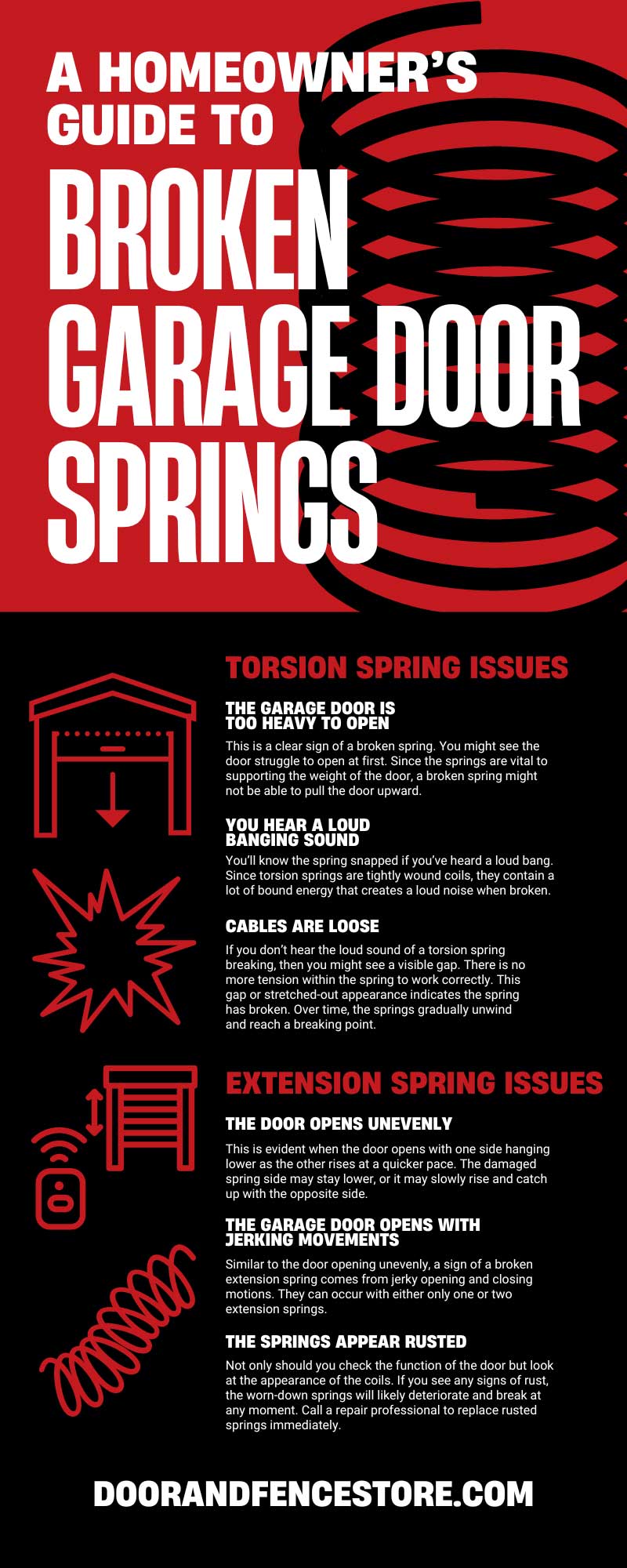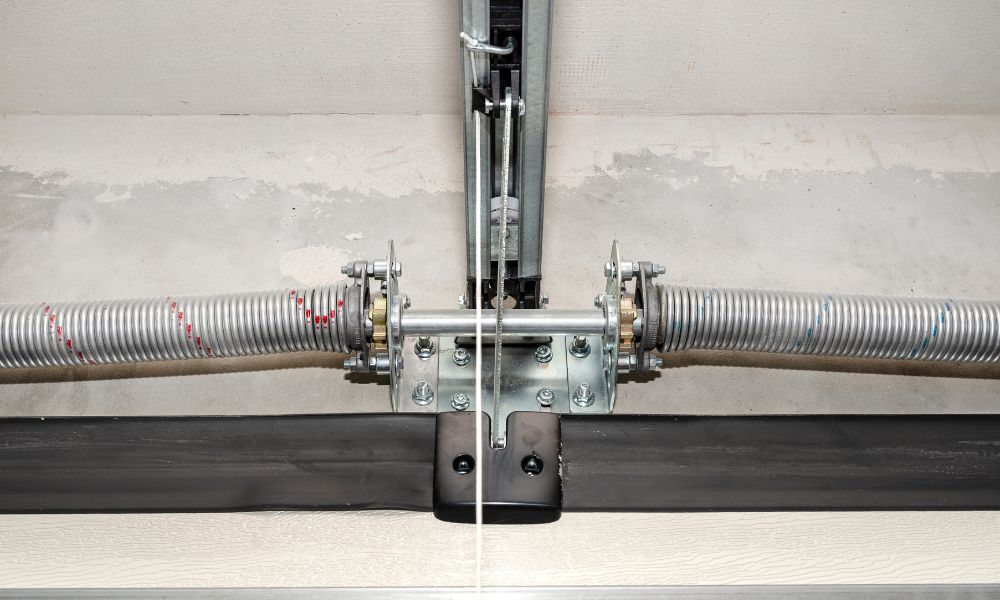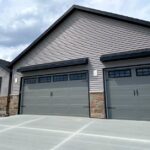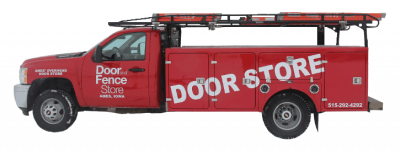Garages are convenient for homeowners for various reasons—parking your car, conducting messy projects, and storing items that won’t fit inside your home. If your garage door begins to malfunction, this convenient space can become inaccessible and lead to you asking, “What’s wrong with my garage door?”
Most homeowners believe the garage door motor does the bulk of the work, but many other mechanisms encompass the operation. A common culprit to a faulty garage door is a broken spring.
Continue reading our homeowner’s guide to broken garage door springs to know the signs to look for.
The Different Types of Springs
Before identifying the problem or repairing the broken garage door springs, you need to understand the type of springs a garage uses. There are two main types: torsion and extension springs.
Torsion Springs
Torsion springs are the most common springs used for residential garage doors. Some light garage doors only use one spring, but it’s safest to use two springs on all garage doors if possible.
A torsion spring is a tight coil of metal placed horizontally above the garage door opening; it uses torque to pull the door open and shut it. This twisting motion causes rotation and enables the garage door to function properly.
Extension Springs
Rather than rotating like a torsion spring, extension springs elongate and create a counterbalance to support the opening and closing of the garage door. The springs mount to a bracket, fully extend outward to close the door, and use the energy acquired with the previous movement to open the door when needed.
Typically, two extension springs lie perpendicularly to the garage door above the door tracks. A spring goes on each side with a safety cable wrapped around the spring to protect others in case the spring breaks.
Signs It’s Time To Replace Your Garage Door Springs
Garage door springs are incredibly durable and should last about 10,000 cycles of opening and closing. This equates to roughly three to seven years of use!
Springs are typically the first part of the garage door system to break. If you experience any trouble with the garage door, there’s a high probability the spring sustained damage. Step into the garage and give it a quick look to see if anything operates unusually.
Torsion Spring Issues
Broken or busted garage door springs can be identified with a quick inspection. Here are some important steps to take that will help you evaluate if something has gone wrong with your garage door:
The Garage Door Is Too Heavy To Open
This is a clear sign of a broken spring. You might see the door struggle to open at first. Since the springs are vital to supporting the weight of the door, a broken spring might not be able to pull the door upward.
You Hear a Loud Banging Sound
You’ll know the spring snapped if you’ve heard a loud bang. Since torsion springs are tightly wound coils, they contain a lot of bound energy that creates a loud noise when broken.
You See a Gap Within the Spring
If you don’t hear the loud sound of a torsion spring breaking, then you might see a visible gap. There is no more tension within the spring to work correctly. This gap or stretched-out appearance indicates the spring has broken. Over time, the springs gradually unwind and reach a breaking point.
Cables Are Loose
A broken spring is one cause for loose cables. The cables work closely with the springs to raise and shut the garage door. Loose cables mean there’s a chance the broken spring will eventually cause the cables to break. You might need to replace both items to ensure your safety and restore the proper performance of the door.
The Garage Door Falls Quickly
The purpose of garage door springs is to hold the door’s weight with the necessary force. Torsion springs pull and release the door up and down. When the spring breaks, the garage door might fall quickly because the springs no longer have the power of control to support it.
Extension Spring Issues
Since extension springs function slightly differently than torsion springs, we’ve listed a few extra signs to look out for.
The Door Opens Unevenly
Raising a garage door with a broken spring can be difficult or even impossible. If your garage door uses two extension springs, there’s a chance only one endured damage. This is evident when the door opens with one side hanging lower as the other rises at a quicker pace. The damaged spring side may stay lower, or it may slowly rise and catch up with the opposite side.
The Garage Door Opens With Jerking Movements
Similar to the door opening unevenly, a sign of a broken extension spring comes from jerky opening and closing motions. They can occur with either only one or two extension springs. It’s best to have this issue checked by a professional before continued use so you don’t cause more damage to the garage door’s performance.
The Springs Appear Rusted
Not only should you check the function of the door but look at the appearance of the coils. If you see any signs of rust, the worn-down springs will likely deteriorate and break at any moment. Call a repair professional to replace rusted springs immediately.
What To Do Now?
There are still ways to open and close your garage door if a spring breaks, but it’s best to avoid operating it at all costs. You could potentially harm yourself or cause more damage to the springs and garage door. Since the function of the spring is to move a heavy garage door up and down, a broken spring can wreck the motor.
The best thing you can do when a torsion or extension spring breaks is to call a professional technician to conduct a proper repair. As a homeowner, you can usually resolve many issues on your own; this is not the case for broken garage door spring repairs! For your own safety, you need to call a professional to examine the damage and conduct the necessary repairs.
If you need a garage door spring replacement, our repair technicians at the Door and Fence Store will assess and fix your garage door problems! Browse our blogs to learn more about how to deal with broken garage door springs and other problems causing issues with opening and closing. Contact us today with any questions.









